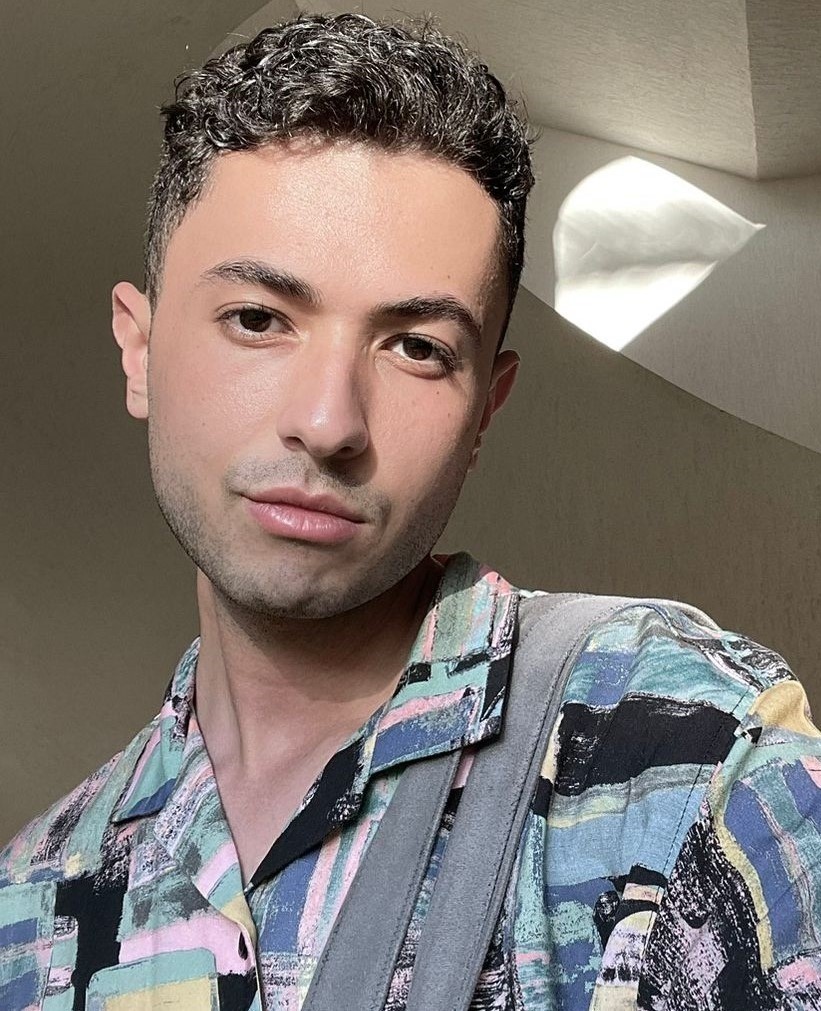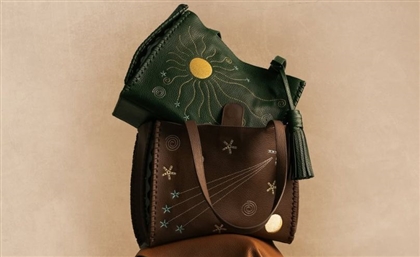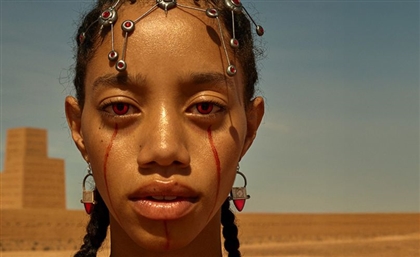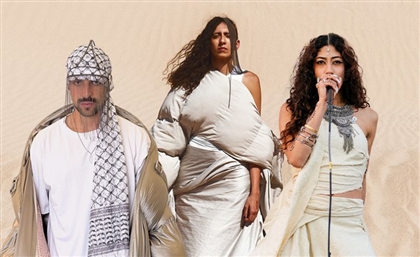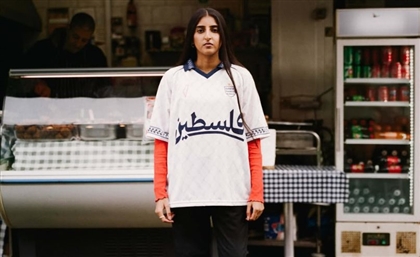From Recycled Objects to Runway Art: This is Amel Batita’s Story
Inspired by animal skins, Paris-based Algerian-Tunisian designer Amel Batita crafts sustainable silk masterpieces.
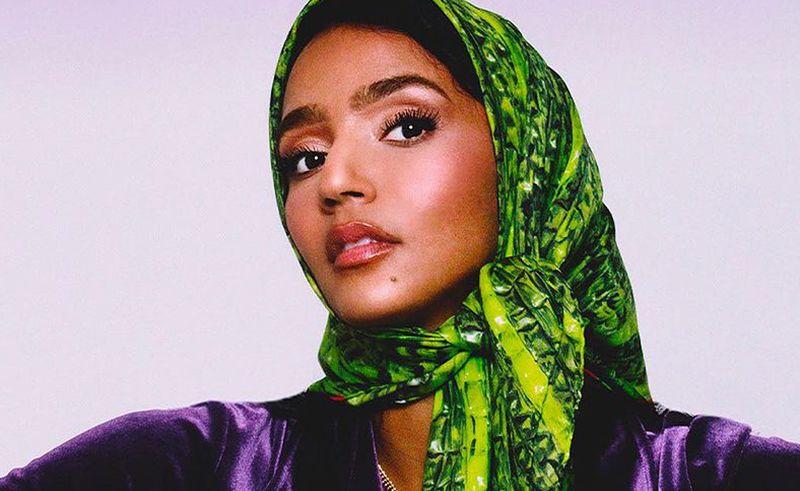
Growing up surrounded by silk scarves as the daughter of a longtime merchant, Paris-based Algerian-Tunisian designer Amel Batita was uniquely positioned to understand the versatility and timelessness of this fashion staple. Rather than accept scarves as stale status symbols, Batita infuses new life through her inventive ‘art-cycling’ practice. Recycling found objects into avant-garde textures, she revives these items' narratives while crafting sophisticated sustainment. Where others detach artistic expression, Batita demonstrates their symbiosis through scarf-sculptures marrying medium and message.
Batita's one-of-a-kind scarves showcase her boundless creativity and attention to detail. Intricate patterns emerge from mundane objects, vibrant hues captivate with a force, and animal prints evoke feelings of boldness and empowerment….
In a virtual conversation with SceneStyled, Amel Batita spoke openly about her innovative process and ambition to revolutionise the fashion industry, delving into the past that had come to define her future.
 How was it like growing up and witnessing your father’s craftsmanship with silk?
How was it like growing up and witnessing your father’s craftsmanship with silk?
My father has been a merchant of scarves for 40 years. Ever since I was a little girl, I’d go with him to Italy to buy scarves, and I was amazed by all the colours and materials. I remember our garage was a swimming pool of scarves, and I just loved to dive into it. I really grew up surrounded by scarves. It was like a member of the family with whom I had a lot of fun.
As I grew up, I started working with my father every Sunday in the market, where I met women for whom the scarf was more than an accessory. They were looking for a scarf that would highlight their values and both their inner and external beauty. So I helped them find the matching scarf that would fit their values and personalities, I was really involved! I’ve always had a special approach to scarves, and I naturally knew that I would develop this vision in the future.
 When did you initially discover your passion for the arts?
When did you initially discover your passion for the arts?
I’ve always been fascinated by the subtleties of the world. So I often drew or took photos, which led me to an art school in Paris specialising in visual communication. This was a revelation for me because I had finally managed to give meaning to this constant fascination. It was there that my career as a ‘plastic artist’ began. Even though everything was focused on digital, I integrated my manual touch into every project.
I started collecting everything that was lying or destined to be thrown away in my home, using it, and transforming it. I did everything I could to create abstract textures on canvas, it made me dream.
Later, I started working in the fashion industry as a graphic designer. I continued to make textures, but I missed working in the markets with my dad. I missed the inspirational women that I met. So I realised that my final canvas would actually be this accessory close to my heart, the scarf.
 How would you say your experience as a graphic designer ties into what you do today?
How would you say your experience as a graphic designer ties into what you do today?
My graphic design background significantly contributes to my current campaigns and art direction, where I handle every aspect independently. This expertise proves especially beneficial in crafting designs for silk scarves, as I prioritise precision down to the millimetre for a flawless outcome.
 Could you walk me through your creative process?
Could you walk me through your creative process?
My creative process unfolds in four distinct stages for an Amel Batita silk scarf. I begin by selecting a recycled object and meticulously analyse it, adopting a scientific approach. From this analysis, I create a unique texture, providing the object with a fresh aesthetic value. Transitioning to the digital realm, I design and compose the artwork, transforming the texture into a fashionable pattern.
The third stage involves printing the design on luxurious twill silk in Italy, ensuring a high-quality result with a hand-rolled finish. The final step is adding my signature, a crucial element for authenticating each artwork. Every scarf bears my signature on leather scraps from Amel Batita, achieved through hot stamping in Paris. Additionally, each piece comes with a certificate of authenticity, providing detailed insights into the artwork and enhancing transparency in the creative process.
 I’d love to hear all about your art cycling approach, how do you source the materials you recycle?
I’d love to hear all about your art cycling approach, how do you source the materials you recycle?
I engage in collecting items that are either discarded or destined for disposal in our everyday lives. My approach involves looking beyond the object's conventional use, unveiling its hidden beauty, and imbuing it with an entirely new value. I find joy in the transformative process, reshaping objects in a way that conceals their original identity, a concept I refer to as Intuitive art or, more personally, ‘art cycling’.
Particularly, I enjoy crafting luxury pieces from items that society tends to overlook or no longer values. This holds significant relevance in a society dominated by over-consumption. I firmly believe in the creative potential inherent in repurposing what we've already used.
My mission is to demonstrate to the world that recycling is not only viable but also aesthetically pleasing, even in the realms of art, fashion and luxury. I aim to share my unique approach, which I define as ‘art cycling’, showcasing a mindset that encourages recognizing beauty in everything by being mindful of it.
 Your patterns and prints are so genuinely gorgeous and unique - how do you envision a new piece?
Your patterns and prints are so genuinely gorgeous and unique - how do you envision a new piece?
First of all, I am inspired by what I see every day. I see beauty everywhere. And above all, I tend to enhance everything I see. So, I have decided to share this worldview through my designs, art, and fashion. Fashion has always been a means for me to assert myself and stand out; today it is undoubtedly a universal language of art.
I have always been a fan of animal prints. When one wears this pattern, it reflects a certain power, a wild and elegant presence. This inspires me when I create my textures. I then reinterpret animal skin in a subtle and bold manner with recycled objects. And this is also my way of denouncing the use of fur and advocating for the protection of animals.
For example, my last collection is inspired by crocodile skin, and the designs are made from recycled plastic bottles of water. So when we wear my scarves on our head or around the neck, it’s like it’s our second or a new skin, and you feel empowered.
 What message do you seek to convey through your label and designs?
What message do you seek to convey through your label and designs?
I want to show to the world that recycling is possible and beautiful even in the art, fashion and luxury industries.
Ever since launching the label, how has that journey been?
Everything is going very well! The Amel Batita creations are spreading all over the world, in Hong Kong at Harvey Nichols, in Dubai at the Jumeirah Hotel, and in Paris!
I also hold an annual exhibition, the Amel Batita’s Museum, where I exhibit artwork and its silk scarves. It’s an immersion into the creative universe of my brand, with a lot of colours and textures. It’s a real fusion of art and fashion. These exhibitions are real successes every time! In fact, I am currently preparing for the next one.
I am also in the process of developing other creations that will accompany the scarves... I was also one of the four finalists in the prestigious fashion competition, Fashion Trust Arabia. It’s a great recognition after two years of existence.
 What are your hopes for the future of the label?
What are your hopes for the future of the label?
My hope for the future is to become a reference for scarves that represent this new generation: inclusive, dynamic and creative.
- Previous Article Museum of Islamic Art Doha Hosts Exhibition for Safavid Iran’s Fashion
- Next Article Monochrome Monday: The Electric Blue Edition
Trending This Month
-
Nov 18, 2025
-
Nov 20, 2025

